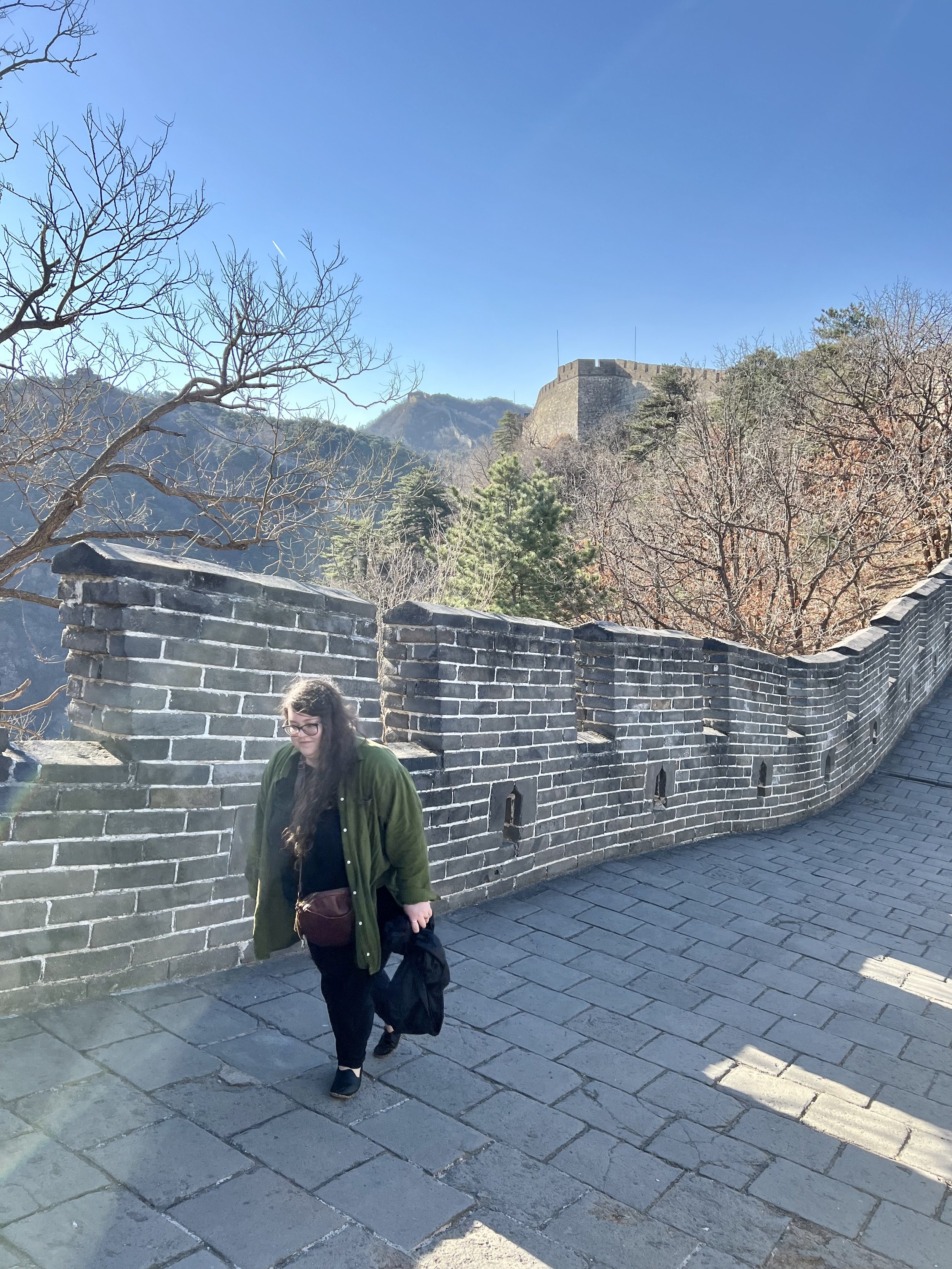The Great Wall of China
Tony, our friendly 33-year-old Chinese guide—who wore a NY Yankees ball cap and spoke perfect English—told us there’s a saying in China that the wall was not built with only mud & stone but also with blood & bone. In antiquity, each Chinese family was required to provide one male child to work on the Wall. The slaves, prisoners, and common workers who built the Wall often paid with their life and were buried underneath it. All the stones came from other mountains and were carried up by people and animals.
Perhaps so great a sacrifice is required from a nation to make something that’s able to last this long in human history. We’re only human, after all.
These days, Chairman Mao declares no boy is a man until he visits the Great Wall. It’s common for Chinese nationals and school groups to visit and, of course, it attracts visitors like us from around the globe.
Tony, like many in the world, dreams of visiting America one day. He’s torn between NYC and California or ideally both if he’s able to secure the visa and save up enough money. He and his wife welcomed a daughter 2 years ago during the pandemic. Though he has lived in Beijing since 2010, their daughter will not be allowed to go to public school there. They call them the “lost children” and it’s likely she will go back to her father’s hometown village to live with her grandparents once she’s school age. The only way to access the public school system in Beijing would be to marry into one of the Families and expensive international school is the only other option. No future generations of his will ever be allowed to go to school there either—no matter how long they’ve lived in the capital. When asked if anyone was working on changing this system, he laughed and said he didn’t think so.
2,700 years ago, they were a bunch of separate walls built by different dynasties and Chinese states. It wasn’t until Emperor Qin Shi Huang came to power as a prepubescent 13-year-old (2,276 years ago) did we see a unified China and a connected Wall. Qin Shi Huang orchestrated a radical overhaul, streamlining bureaucracy, setting uniform standards for weights, measures, and script, and laying down a web of roads and canals to grease the wheels of trade. Yet, his rule had a dark side, with draconian laws and a brutal crackdown on dissent. He even went so far as to incinerate books and bury alive those who dared to question his authority, leaving a controversial legacy. He ruled until his death at 49.
The most well-known sections were built during the Ming Dynasty (1368-1644 AD). The Great Wall stretches approximately 13,000 miles (21,000 km) across China’s northern borders, from the east to the west.
Tony speaks of YouTube, Facebook, Twitter, Instagram, Google, Yahoo, and other such websites with a somewhat wistful tone. He’s curious if we’ve noticed in our short time in Mainland China that they do not work here. Instead there are government-controlled versions of each, but he hints of ways around the block for those intent on reaching the unfettered World Wide Web.
The Great Wall was meant to protect China against invaders from the north and regulate trade and immigration. Outside of China, you may hear the Wall was overall unsuccessful. Invaders from many centuries managed to breech the Wall by brute force and bribes alike. How harsh we are on something like a wall—requiring a 100% score to be considered a success. Yet, amidst the ebb and flow of history, the Great Wall endures. A monument to the eternal struggle for security and sovereignty and a point of national pride for the People’s Republic of China.
I smile to myself in the gift shop below the Wall—the one place in the world where all the Made In China stickers seem authentic and desirable. We order green tea, spicy tofu, and some kind of meaty pastry and sit down to stare at the Great Wall while we enjoy—frequently distracted by the guides outside passing the time waiting for their guests to come down from the Wall by gambling money on card games. This seems a daily occurrence.
Too soon, we say goodbye to the Great Wall and zip back to the airport—a quick 90 minutes—where we bid a fond farewell to Tony and his driver. I’ll put the link below to the booking we made. I can’t think of a better excuse to seek out a long layover in Beijing. ♥️
I hope you get Tony.
HW

